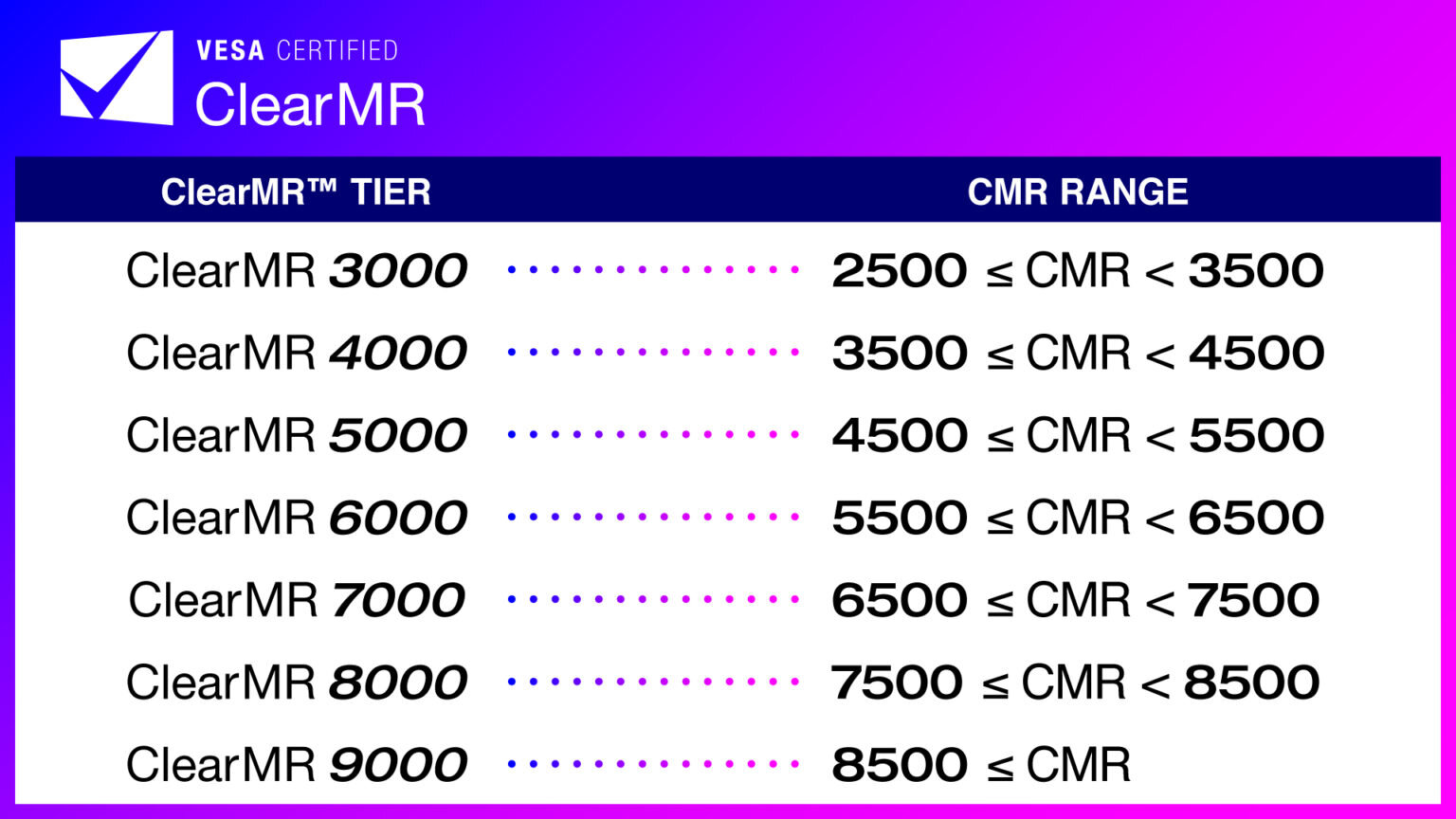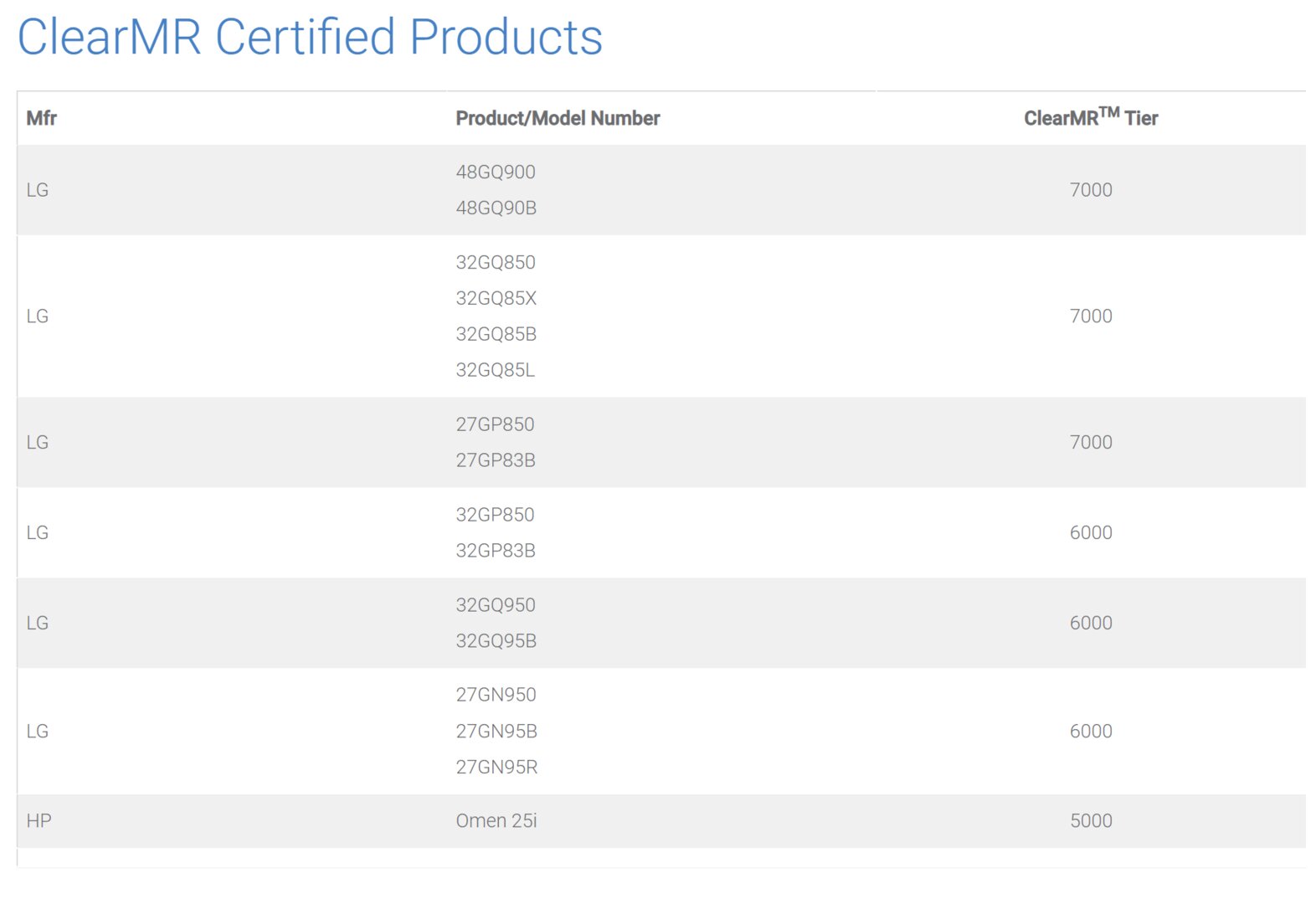The Video Electronics Standards Association (VESA) has introduced another certification program for displays. In various stages, the Clear Motion Ratio (CMR) should serve as a benchmark for the motion blur of displays and replace the Moving Picture Response Time (MPRT).
The The still ubiquitous liquid crystal screens (LCD) have a more or less pronounced weakness in the display of moving images, depending on the type, which is particularly noticeable in games with fast scene changes due to visible streaks. This is also referred to as motion blur.
A few years ago, the first monitor manufacturers began to specify the so-called Moving Picture Response Time (MPRT) as a unit of measure for motion blur. The MPRT tells how long a pixel is continuously visible. Initially, it was often confused with the established response time when switching between grayscale (GtG).
CMR as a new benchmark for motion blur
h2>
Perhaps this is also one of the reasons why VESA has now decided to take a different approach. According to VESA, the Clear Motion Ratio (ClearMR or CMR) is “an industry standard and logo program that offers a new quality metric for the classification of motion blur in digital displays”. According to defined test criteria, display manufacturers can have their products certified for one of the various CMR levels and then advertise with the corresponding logo.
 The different CMR levels (image: VESA)
The different CMR levels (image: VESA)The spectrum ranges from CMR 3000 to CMR 9000, with the number “based on the ratio of clear pixels to blurred pixels in percent”, according to the current VESA press release. As an example, it calculates that ClearMR 7000 defines a range “from 65 to 75 times (6500 to 7500 percent) more clear pixels than blurred pixels”. The higher the number, the less blurriness there should be on the display.
MPRT is insufficient
MPRT, as a purely time-based metric, “does not reflect the true nature of blurring,” it said. For example, certain image improvement measures that reduce motion blur at the expense of negative effects such as artifacts and overshoot (overshoot) are not taken into account by the MPRT. However, the use of these “image enhancers” is restricted in the test procedures according to the ClearCMR standard. Backlight strobing, a widespread means of reducing motion blur, is deactivated in the tests. This enables consumers to make a fair comparison of the “Motion Blur Quality” of certified displays.
First products with the CMR logo
It remains to be seen whether this is really the case have to. The new gaming monitors 48GQ900, 32GQ850 and 27GP850 from LG's UltraGear series are said to be the first products to be allowed to bear a CMR logo. A look at the official list of previously certified products shows that the HP Omen 25i has received a CMR logo alongside a whole range of LG monitors.
 Products certified with ClearMR so far (image: VESA)
Products certified with ClearMR so far (image: VESA)Test procedure (still without HDR)
In the tests for determination At the CMR stage in authorized test centers, a high-speed camera and a colorimeter are to be used, among other things. The performance criteria for the tests are as follows:
 Guidelines for the CMR tests (image: VESA)
Guidelines for the CMR tests (image: VESA)The logo program is not limited to the LCDs mentioned at the beginning, but can also be used with OLEDs -Displays are used. At the beginning, however, we only tested in SDR mode. Test procedures in HDR mode are still being developed.